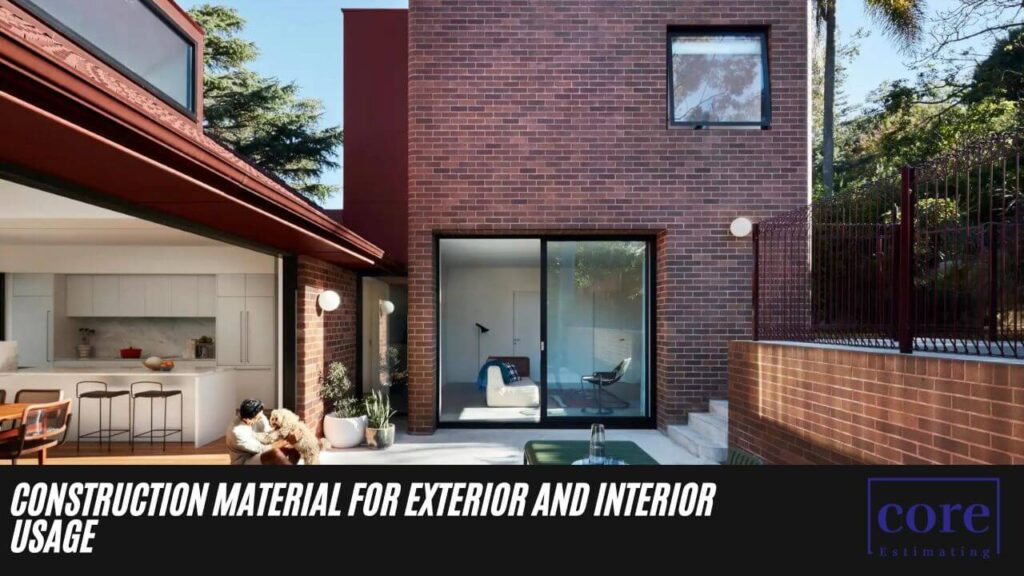When it comes to constructing a building, whether it’s a residential home, commercial complex, or any other structure, the choice of construction materials plays a pivotal role. Not only do these materials determine the durability and aesthetic appeal of the building, but they also influence factors such as energy efficiency, maintenance requirements, and overall cost. In this comprehensive guide, we will explore various construction materials suitable for both exterior and interior usage, helping you make informed decisions for your next construction project.
Selecting the right construction materials for both the exterior and interior of a building is a crucial decision. It’s not only about achieving the desired look but also ensuring the structure’s longevity, energy efficiency, and overall performance. This guide will walk you through the various options available, along with their benefits and considerations.
If you’re in need of construction estimate services, simply go to homepage or follow the links below:
| Services | Links |
|---|---|
| Detailing Services | Link |
| Building Information Modeling | Link |
| General Contractor | Link |
| Subcontractors | Link |
| MEP | Link |
Exterior Construction Materials
Choosing the Right Exterior Materials
The exterior of a building is its first line of defense against the elements. Therefore, choosing materials that can withstand weather conditions, provide adequate insulation, and maintain their appearance over time is essential.
Brick: A Timeless Classic
Brick has been a popular choice for centuries due to its durability and classic aesthetic. It offers excellent thermal mass, meaning it can absorb and release heat slowly, contributing to energy efficiency.
Wood: Natural Charm and Versatility
Wood brings a natural warmth and versatility to the exterior. It can be shaped and treated in various ways to achieve different styles, but proper maintenance is crucial to prevent rot and decay.
Concrete: Strength and Durability
Concrete is known for its strength and longevity. It’s a versatile material that can be molded into different shapes and finishes, making it suitable for modern and minimalist designs.
Stone Veneer: Elegance and Texture
Stone veneer provides the appearance of natural stone at a fraction of the cost. It adds elegance and texture to the exterior, enhancing curb appeal.
Metal: Modern Aesthetics
Metal materials such as steel and aluminum offer a contemporary look. They are lightweight, low-maintenance, and can be used creatively to achieve a modern aesthetic.
Interior Construction Materials
Interior Material Considerations
Interior materials should not only be visually pleasing but also functional and comfortable. Factors such as indoor air quality, acoustics, and ease of maintenance should be taken into account.
Drywall: Standard and Versatile
Drywall is a staple in interior construction. It provides a smooth surface for paint and decorations, and it’s relatively affordable and easy to install.
Hardwood: Warmth and Elegance
Hardwood flooring adds warmth and elegance to interior spaces. It’s durable and can be refinished, making it a long-term investment.
Tiles: Stylish and Functional
Tiles are popular for areas with high moisture, such as bathrooms and kitchens. They come in a variety of styles, colors, and patterns, allowing for creative design choices.
Vinyl: Affordable and Resilient
Vinyl flooring is budget-friendly and highly resilient. It can mimic the look of more expensive materials while offering easy maintenance.
Glass: Transparency and Modernity
Glass is used to create open and airy interiors. It enhances natural light flow and adds a touch of modernity to spaces.
Factors to Consider
Durability and Longevity
The durability and longevity of construction materials influence maintenance costs and the building’s overall lifespan.
Aesthetic Appeal
Different materials offer varying aesthetics. Choosing materials that align with your desired style is essential for creating a cohesive look.
Maintenance Requirements
Consider the maintenance needs of each material. Some materials may require regular upkeep, while others are low-maintenance.
Environmental Impact
Evaluate the environmental impact of materials. Sustainable options can reduce the carbon footprint of your construction project.
Balancing Exterior and Interior Materials
Consistency and Cohesiveness
Maintaining consistency between exterior and interior materials creates a harmonious flow throughout the building.
Transitioning Between Spaces
Use complementary materials to smoothly transition from exterior to interior spaces, enhancing the overall experience for occupants.
Energy Efficiency and Insulation
Insulating Exterior Walls
Proper insulation in exterior walls improves energy efficiency, regulates indoor temperatures, and reduces utility costs.
Insulating Interior Spaces
Interior insulation contributes to acoustic comfort and energy efficiency within individual rooms.
Cost Considerations
Upfront Costs vs. Long-Term Savings
Balancing upfront material costs with long-term energy savings and maintenance expenses is crucial for budget planning.
Return on Investment (ROI)
Certain high-quality materials can increase the property’s value, providing a favorable return on investment.
Conclusion
Selecting construction materials for both the exterior and interior of your building is a complex yet rewarding endeavor. By considering factors such as durability, aesthetics, maintenance, and energy efficiency, you can create a structure that stands the test of time while providing comfort and visual appeal.






